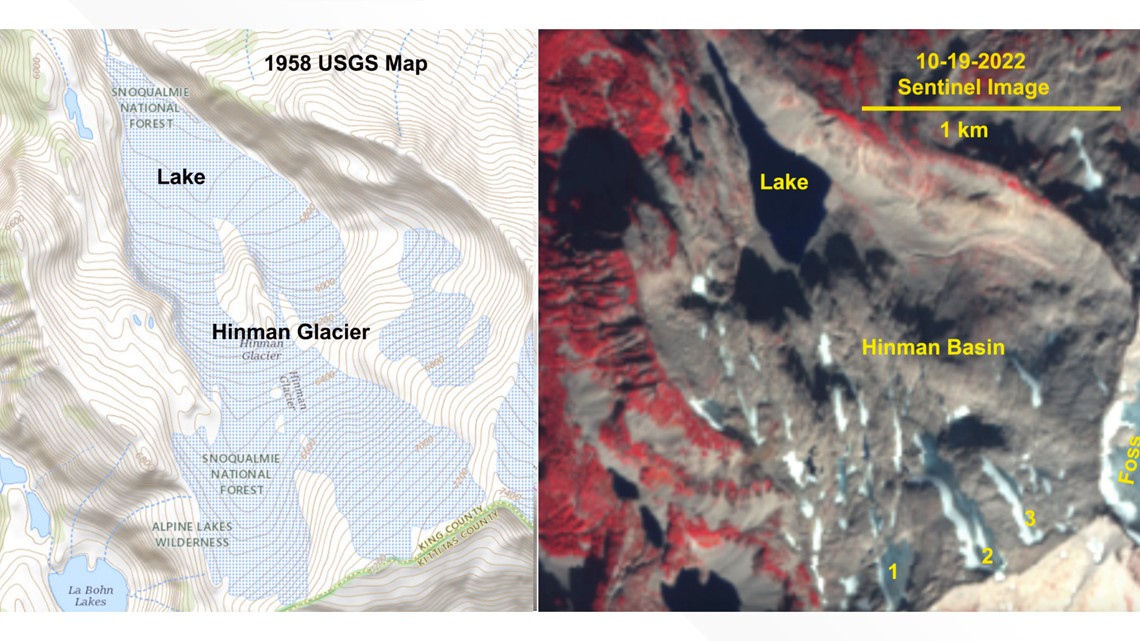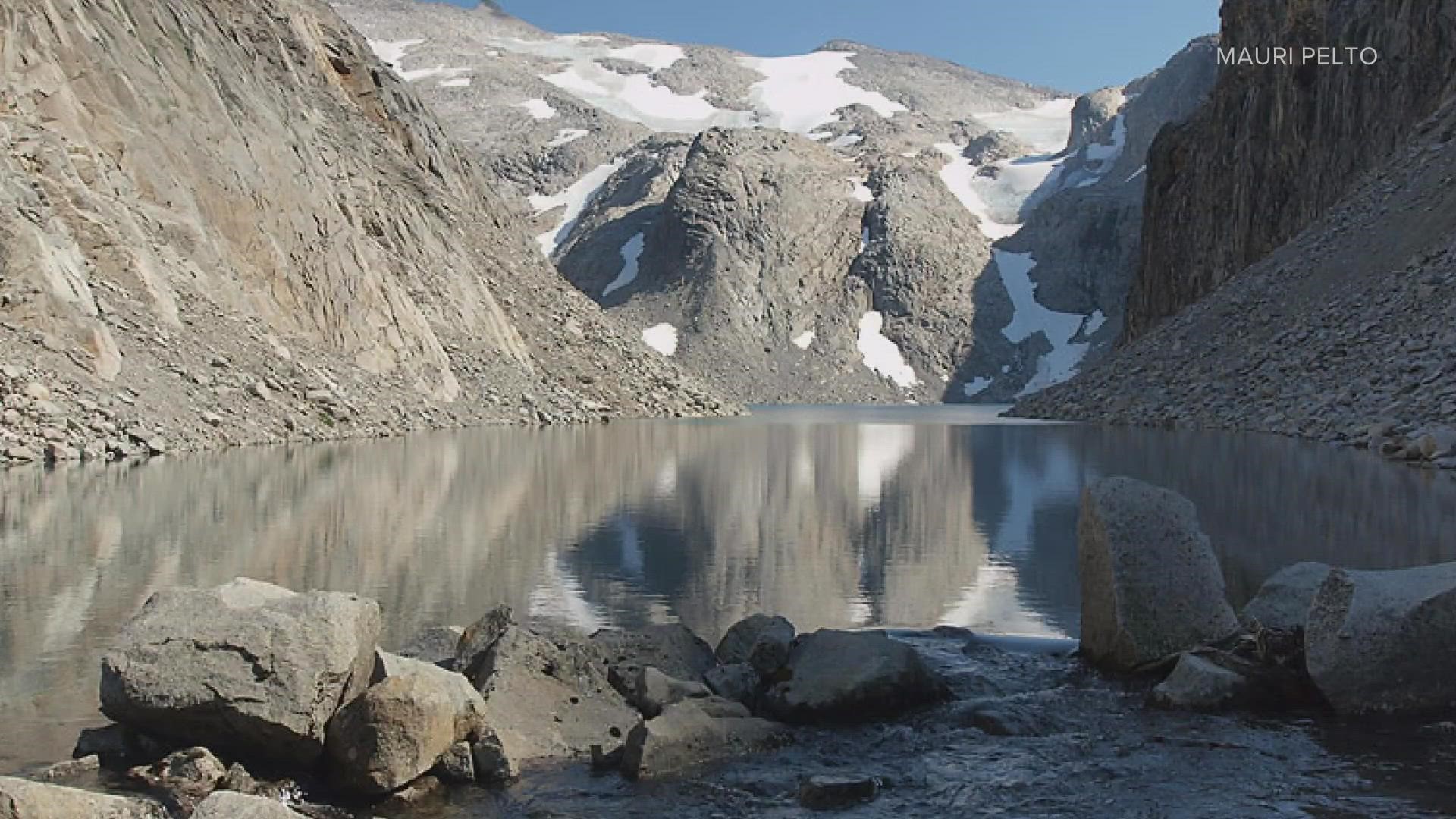SEATTLE — The largest glacier between Mount Rainier and Glacier Peak has almost completely melted away.
Hinman Glacier, which sits on the Cascade Mountains spine between Snoqualmie and Stevens passes, shrunk to just 0.04 square kilometers in 2022, according to glaciologist Mauri Pelto. This is just 4% of its 1958 size.
Pelto, an associate provost at Nichols College in Massachusetts, studies glaciers in the North Cascades and tracks how they change over time.
Climate change factors, including warmer summers and winters and more rain events in winter, contributed to Hinman’s disappearance, Pelto said. In Hinman’s case, Pelto said it also did not get as much additional snow coverage from avalanches or wind, so it was more sensitive to climate change than other glaciers may be. Its tendency to be bare of snow cover in August led to its rapid loss.
“If you have no snow cover, that basically means you had no income that year. All you had was expenditures,” Pelto said.
Scientists have been tracking the demise of Hinman Glacier for decades. In the 1960s, the glacier extended from the ridge top of Mount Hinman to the valley below and measured 1.3 square kilometers in 1971. In 1988, surveys showed that the amount of blue exposed indicated that the glacier did not have a significant accumulation zone and could not survive. In 2006, scientists said the glacier was no longer detectable underneath snow cover that persisted into summer.


While the disappearance of Hinman Glacier may be eye-opening, Pelto is just as concerned about the overall decline of glaciers across the Cascades and other mountain ranges. Shrinking glaciers mean less runoff in streams, which can be detrimental for fish and other industries that rely on snowpack.
Pelto’s team studies three other glaciers in the Skykomish River basin, which have also gotten smaller over the last 60 years. Foss Glacier on the other side of the ridge has declined 70% in area since 1958. The Lynch and Columbia glaciers have declined by 40% and 25%, respectively.
“Lynch and the Columbia’s last decade has just seen a tremendous thinning of those glaciers, rocky outcrops poking out, retreat at the terminus, a new little lake at the bottom of the Columbia, just like we saw at the bottom of Hinman develop in the 1990s,” Pelto said.
Further north, in the Nooksack River basin, Pelto said it’s the same story, although these glaciers are about 30 years behind Hinman.
“The Skykomish to me is a good template for what’s going to happen in the Nooksack,” Pelto said.

